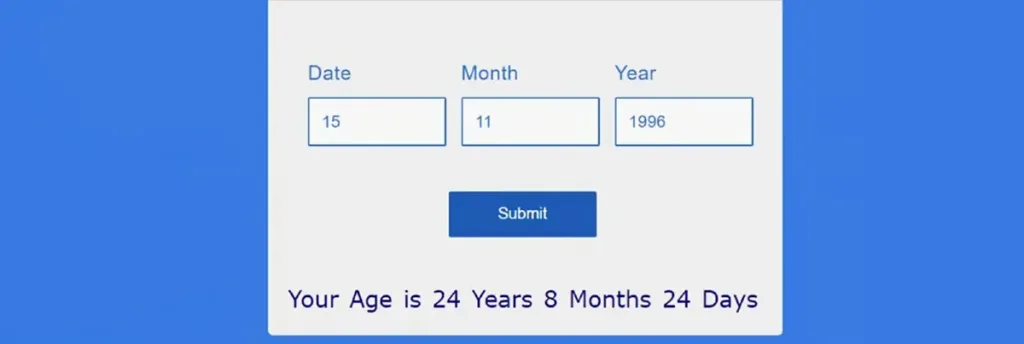Date to Words: Transform Your Numbers into a Captivating Narrative with 4 Bold Tips

Conversion Date to Words in ASP.NET C#:
In the realm of web development, there often arises the need to translate numerical data into human-readable text. One common scenario is converting dates into words, particularly in applications where user interfaces demand a more natural and engaging presentation. In this article, we’ll explore how to achieve this task effectively using ASP.NET C# and delve into four key tips to enhance the process.
Understanding the Context: TextBoxes in ASP.NET Web Pages
Before delving into the intricacies of converting dates to words, let’s set the stage by understanding the role of TextBoxes in ASP.NET web pages. TextBoxes serve as interactive elements where users can input data. For our purpose, we’ll focus on two TextBoxes: TextBox1 and TextBox2.
TextBox1: The Input Field for Date of Birth (DOB)
TextBox1 serves as the input field where users will enter their date of birth in a specific format, such as “dd-MM-yyyy.” Upon entering the DOB and taking subsequent action, an event handler will trigger to convert the entered date into words.
protected void TextBox1_TextChanged(object sender, EventArgs e)
{
DateConverter dateConverter = new DateConverter();
if (!string.IsNullOrEmpty(TextBox1.Text))
{
try
{
TextBox2.Text = dateConverter.ConvertDateToWords(TextBox1.Text);
}
catch (Exception ex)
{
TextBox2.Text = "Error: " + ex.Message;
}
}
}
Whenever the text in TextBox1 changes, this method is invoked. It instantiates a DateConverter object, processes the entered date, and populates TextBox2 with the corresponding date in words.
Exploring the Date Conversion Logic: Inside the DateConverter Class
The DateConverter the class handles the heavy lifting of converting dates to words. Let’s dissect its components and understand how it transforms numeric dates into captivating narratives.
using System;
using System.Globalization;
public class DateConverter
{
public string ConvertDateToWords(string inputDate)
{
DateTime date;
if (DateTime.TryParseExact(inputDate, "dd-MM-yyyy", null, DateTimeStyles.None, out date))
{
// Get day, month, and year components
int day = date.Day;
int month = date.Month;
int year = date.Year;
// Convert day, month, and year to words
string dayInWords = NumberToWords(day);
string monthInWords = CultureInfo.CurrentCulture.DateTimeFormat.GetMonthName(month);
string yearInWords = NumberToWords(year);
// Construct the full date in words
string dateInWords = ToOrdinal(dayInWords) + " " + monthInWords + " " + yearInWords;
return dateInWords;
}
else
{
return "Invalid Date Format";
}
}
// Convert number to words (up to 9999)
private string NumberToWords(int number)
{
if (number == 0)
return "zero";
if (number < 0)
return "minus " + NumberToWords(Math.Abs(number));
string words = "";
if ((number / 1000) > 0)
{
words += NumberToWords(number / 1000) + " thousand ";
number %= 1000;
}
if ((number / 100) > 0)
{
words += NumberToWords(number / 100) + " hundred ";
number %= 100;
}
if (number > 0)
{
if (words != "")
words += "and ";
string[] unitsMap = {"", "One", "Two", "Three", "Four", "Five", "Six", "Seven", "Eight", "Nine", "Ten",
"Eleven", "Twelve", "Thirteen", "Fourteen", "Fifteen", "Sixteen", "Seventeen", "Eighteen", "Nineteen"};
string[] tensMap = { "", "", "Twenty", "Thirty", "Forty", "Fifty", "Sixty", "Seventy", "Eighty", "Ninety" };
if (number < 20)
words += unitsMap[number];
else
{
words += tensMap[number / 10];
if ((number % 10) > 0)
words += "-" + unitsMap[number % 10];
}
}
return words;
}
// Convert number to ordinal (e.g., 1 -> "first", 2 -> "second")
private string ToOrdinal(string numberInWords)
{
if (numberInWords.EndsWith("one"))
return numberInWords + "st";
if (numberInWords.EndsWith("two"))
return numberInWords + "nd";
if (numberInWords.EndsWith("three"))
return numberInWords + "rd";
return numberInWords + "th";
}
}
The ‘ConvertDateToWords’ Method
This method is the core of the DateConverter class. Its primary purpose is to convert a given date in the format “dd-MM-yyyy” into words.
The ‘NumberToWords’ Method
This private method is responsible for converting numerical values (up to 9999) into words.
The ‘ToOrdinal’ Method
This private method adds ordinal suffixes (“st,” “nd,” “rd,” “th”) to numeric words, ensuring grammatical correctness.
4 Bold Tips for Enhancing Date to Words Conversion
-
Personalization: Tailor the narrative to suit user preferences or cultural backgrounds. Incorporate localized month names or date formats for a personalized touch.
-
Error Handling: Implement robust error handling mechanisms to gracefully manage unexpected inputs or conversion failures. Clearly communicate any errors to the user for a smooth experience.
-
Performance Optimization: Optimize the conversion process for efficiency, especially with large volumes of data. Explore techniques such as caching or asynchronous processing to enhance performance.
-
User Feedback: Solicit feedback from users on the readability and accuracy of the converted dates. Iterate and refine the conversion logic based on user input to continuously improve the user experience.
By leveraging these tips and mastering the art of converting dates to words, developers can elevate the user experience of ASP.NET web applications, transforming mundane numerical data into captivating narratives that engage and delight users.
Conclusion:
In conclusion, mastering the art of “Date to Words” conversion in ASP.NET C# web applications opens a gateway to enhanced user experiences and heightened engagement. By seamlessly translating numerical dates into human-readable narratives, developers can bridge the gap between raw data and meaningful interactions, fostering a deeper connection with users. The ability to present dates in words not only adds a layer of sophistication to web interfaces but also demonstrates a commitment to user-centric design principles.
Furthermore, the journey of “Date to Words” conversion extends far beyond mere functionality; it encompasses a spectrum of considerations, from error handling to performance optimization. By implementing robust error-handling mechanisms, developers can ensure smooth user experiences even in the face of unexpected inputs or conversion failures. Additionally, by optimizing the conversion process for efficiency, through techniques such as caching and asynchronous processing, developers can elevate the performance of their applications, ensuring timely and seamless date conversion experiences.
Moreover, the journey of perfecting “Date to Words” conversion is an iterative one, driven by user feedback and continuous improvement. By soliciting feedback from users on the readability and accuracy of converted dates, developers can refine their conversion logic and tailor it to meet user expectations. This iterative approach not only enhances the accuracy and reliability of date conversion but also fosters a culture of responsiveness and adaptability in web development practices. Ultimately, by embracing the nuances of “Date to Words” conversion and integrating it seamlessly into ASP.NET C# web applications, developers can create immersive user experiences that leave a lasting impression and drive user engagement to new heights.
FAQs:
Q: What is Date to Words conversion in ASP.NET C sharp?
Answer: Date to Words conversion in ASP.NET C sharp# refers to the process of translating numeric dates, typically in formats like “dd-MM-yyyy,” into human-readable text. This conversion enables developers to present dates in a more natural and engaging format, enhancing user experience in web applications.
Q: Why is Date-to-Word conversion important?
Answer: Date-to-Word conversion is important because it simplifies the presentation of dates for users, making them easier to understand and interpret. By transforming numeric dates into words, developers can improve the readability and usability of their applications, leading to higher user satisfaction and engagement.
Q: How does Date-to-Words conversion benefit users?
Answer: Date-to-words conversion benefits users by providing them with a more intuitive and user-friendly way to interact with dates in web applications. Instead of deciphering numeric formats, users can quickly grasp the meaning of dates presented in words, leading to a smoother and more enjoyable user experience.
Q: What are some common scenarios where Date-to-words conversion is used?
Answer: Date-to-words conversion is commonly used in various scenarios, including online forms, event calendars, and scheduling applications. In these contexts, presenting dates in words enhances clarity and reduces the likelihood of user errors when entering or interpreting dates.
Q: How can developers implement Date to Words conversion in ASP.NET C#?
Answer: Developers can implement Date-to-word conversion in ASP.NET C# by creating a dedicated function or class to handle the conversion logic. This class can accept numeric dates as input and return their corresponding textual representations, following established conventions and best practices.



